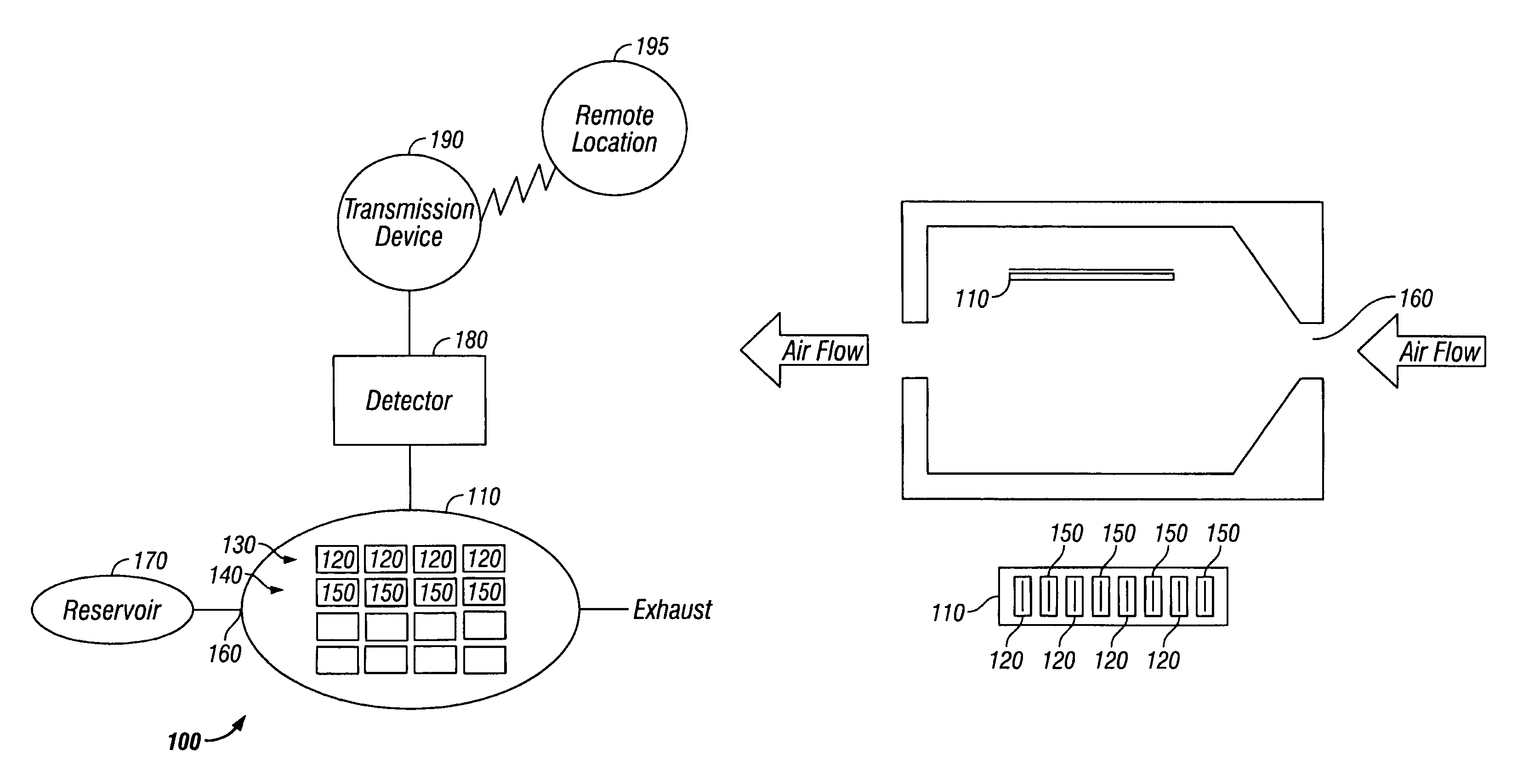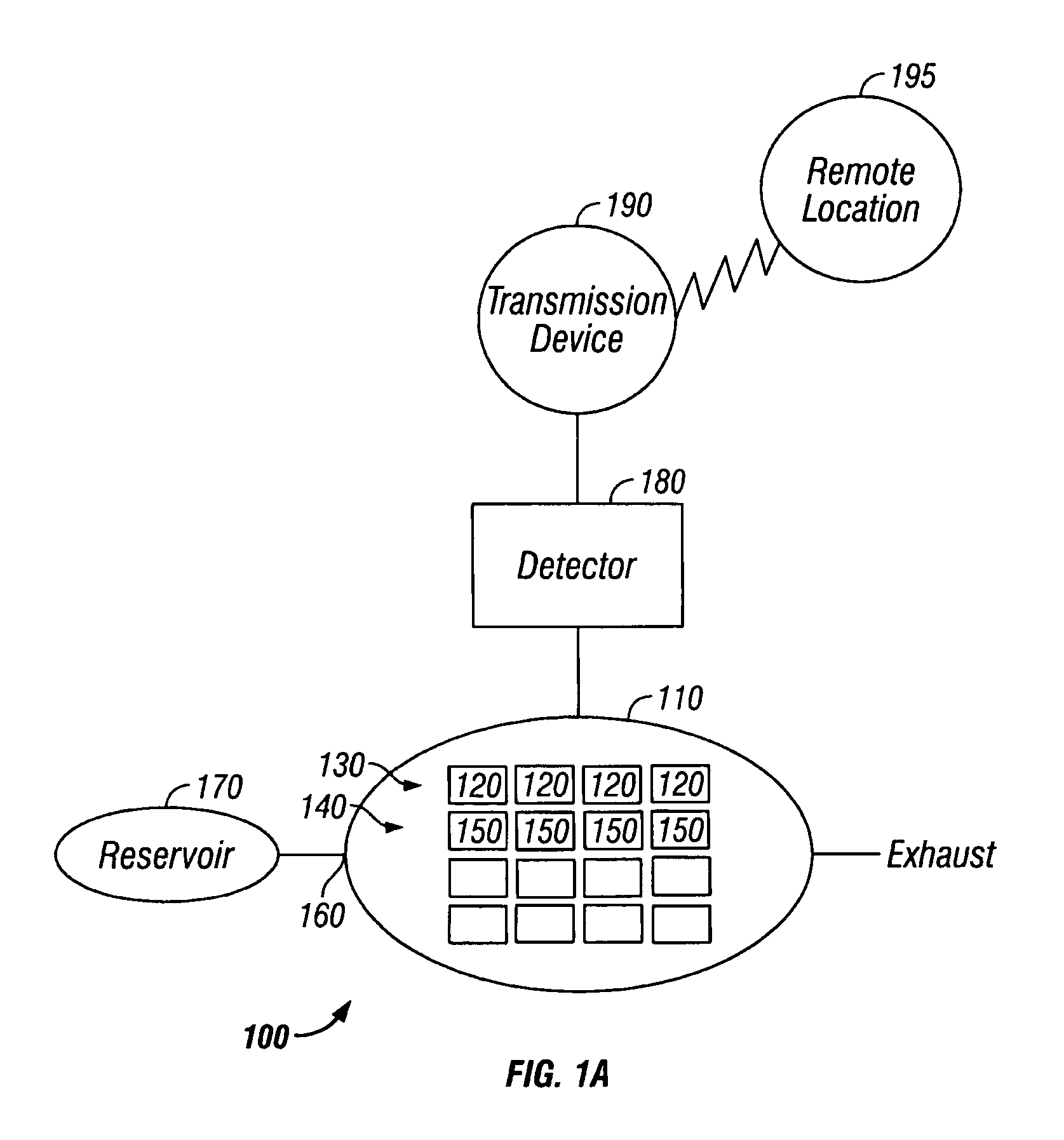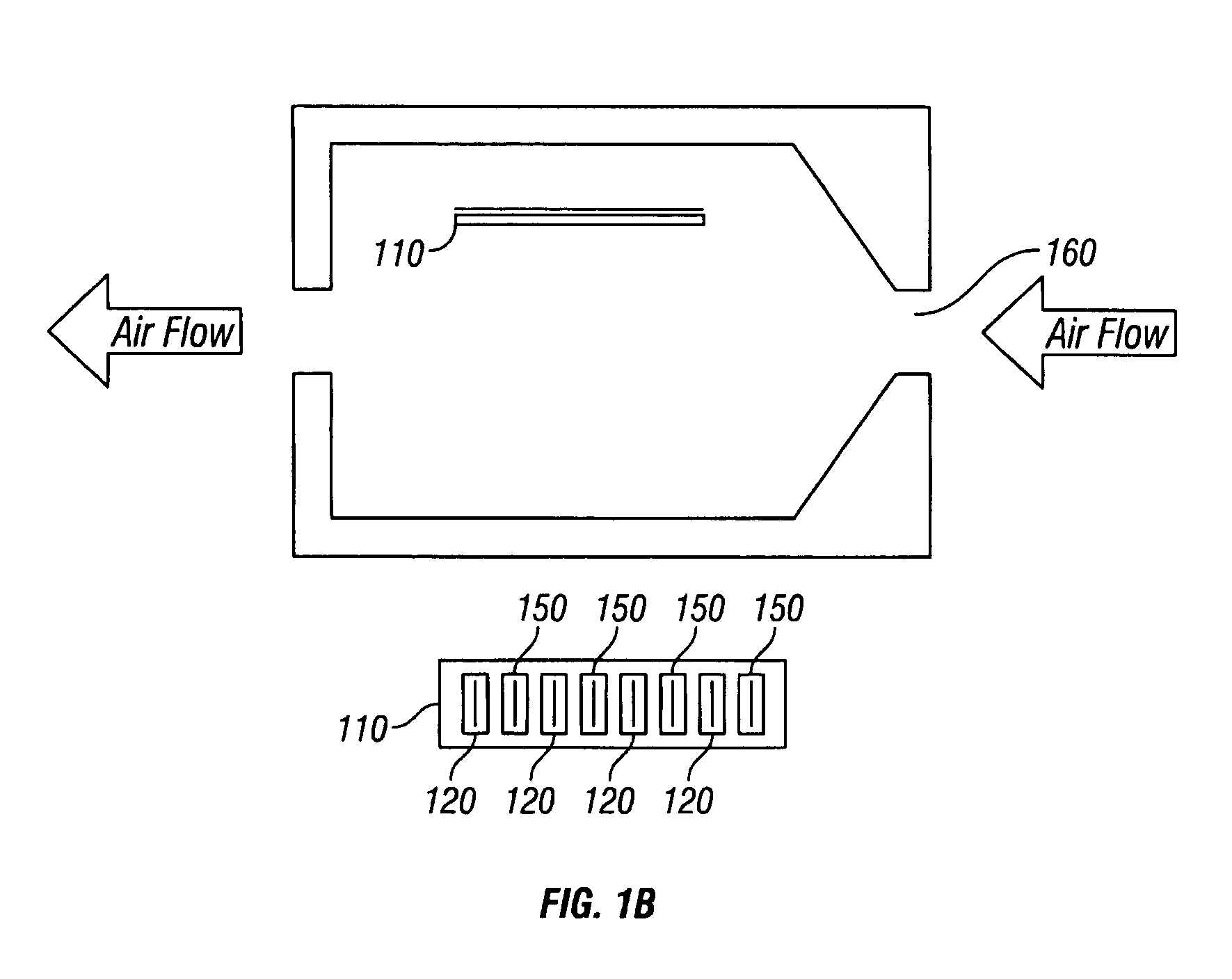Methods for remote characterization of an odor
a technology of remote characterization and odor, applied in chemical methods analysis, data acquisition and logging, instruments, etc., can solve the problems of lost man hours at work, hazardous materials teams, and complicated electronics of the transducer mechanism, so as to facilitate accurate diagnosis and treatment, improve the latter's health or well-being, and improve the effect of diagnosis and treatmen
- Summary
- Abstract
- Description
- Claims
- Application Information
AI Technical Summary
Benefits of technology
Problems solved by technology
Method used
Image
Examples
examples
[0105]A system acquires data from a sensor array when exposed to an unknown analyte, compares the sensor data for the unknown to data stored in a database, then provides the name of the analyte if the unknown matches a member of the database within some threshold accuracy. If no match is found the system returns the word “UNKNOWN”. The system does four things: 1) collect response data from an array of chemiresistive vapor detectors exposed to an unknown analyte, 2) analyze the data and calculate the array response to the unknown, 3) compare the unknown's response values to values stored in a database, and, if a match is found that is within a desired accuracy, identifies the unknown. In addition, a database of the signatures for the analytes that are exposed to the sensor array is compiled, which can be used for historical analysis of change detection of that analyte as well as other transverse studies amongst groups of exposures to look for correlations between members of the group...
PUM
| Property | Measurement | Unit |
|---|---|---|
| frequency | aaaaa | aaaaa |
| volume | aaaaa | aaaaa |
| volume | aaaaa | aaaaa |
Abstract
Description
Claims
Application Information
 Login to View More
Login to View More - R&D
- Intellectual Property
- Life Sciences
- Materials
- Tech Scout
- Unparalleled Data Quality
- Higher Quality Content
- 60% Fewer Hallucinations
Browse by: Latest US Patents, China's latest patents, Technical Efficacy Thesaurus, Application Domain, Technology Topic, Popular Technical Reports.
© 2025 PatSnap. All rights reserved.Legal|Privacy policy|Modern Slavery Act Transparency Statement|Sitemap|About US| Contact US: help@patsnap.com



